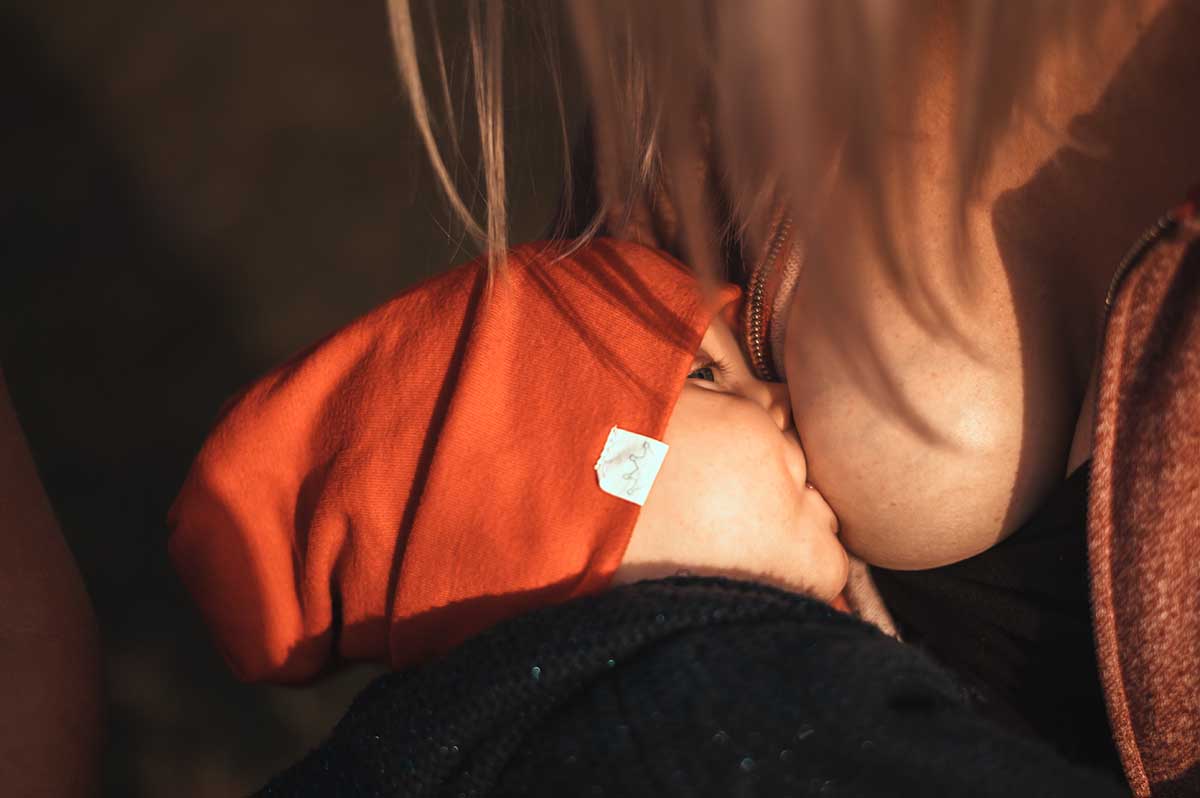I’m writing this in my head as I breastfeed my son to sleep – hoping that I will remember these words once I’m done.
Breastfeeding has become a part of my everyday life since Lorenzo was born 17 months ago. It has caused pain, insecurity, frustration, love, tiredness. Breastfeeding in public has helped me become more nonchalant about my body, despite some malevolent looks. It has also sparked some negative reactions. You may remember how much it upset me: two months ago, a paediatrician told me I was damaging my son by breastfeeding him.
When I wrote about the incident in a newsletter, many readers replied showing their support. Anouk shared a drawing by her 5-year-old daughter in which the mother’s boobs are quite prominent. Jisha wrote from Kerala, in southern India, to say how hard family and friends had made it for her to continue breastfeeding her daughter. Elizabeth wrote that breastfeeding was “hell” but she went ahead anyways.
I must say, I’m grateful to that paediatrician for what he said to me, because my reaction to it, and subsequent research, resonated with a lot of people. His words sent me down a rabbit hole of exploration, which brought up lots of different insights into the latest science behind lactation.
The science of human milk
The first insight, which I published in a story that came out on Friday, is that while breast milk is the first food we humans eat (or at least try to reproduce to eat), we know very little about it.
An example of this that I can’t shake out of my head: the composition of breast milk changes if a child is sick, adding extra antibodies to fight the child’s illness. While we have evidence to show that antibodies increase, we still haven’t figured out how that happens.
Is the baby’s saliva what makes the difference? One theory goes like this: when the baby is attached to the breast, the spit comes into contact with the milk and maybe a signal is sent to the mammary gland to change the milk’s composition. We can only sit back in awe and wait for more research to give us an answer.
This leads me to my second insight. While we tend to believe that human milk is the best food option there is for infants, we haven’t actually done the research to work out why. So we’re designing policies based on limited and sketchy knowledge.
A case in point: in the United States, pumping has become mainstream, with government policies providing tax breaks and new labour regulations to make sure that women can pump even if they go back to work. But what if human milk’s incredible adaptability (remember the increased antibodies?!) is a result of the baby’s sucking from the breast? What happens if the milk is expressed, without the baby-mother interaction? We don’t have answers to these questions, yet governments are pressing ahead with policies that give priority to pumping.
By the way, if you are interested in the idea of pumping, this essay by US historian Jill Lepore that I refer to in my piece is simply brilliant. In it, she asks deep questions like these ones: Is milk medicine? Is suckling love? Is it the mother or her milk that matters more to her baby?
We have no answers to these questions – but asking them is a step in the right direction.
Why ‘human milk’
While researching, I also realised that our tendency towards calling our very first food “breast milk” puts a lot of emphasis on the breast, taking the emphasis away from milk – the actual substance. I was excited to learn that there’s a healthy debate around the use of the terms human milk and breast milk. I asked Aunchalee Palmquist, a medical anthropologist and lactation specialist, who joined us under the article.
This is what she said: “Increasingly journals are recommending that the term human milk is used. This preference makes sense because in the broader literature of mammalian milk studies, the convention is to refer to the kind of mammal producing the milk (eg bovine milk). Breast milk is also a gendered term, reflecting particular socio-cultural histories and ideologies about who makes milk and the social positioning of their lactating bodies. Many scholars and health professionals prefer the term human milk, for example, as a way to employ gender-neutral language. In the social sciences, however, sometimes breast milk is still used, especially within analyses in which scholars may be developing particular theories about gender, motherhood, and breastfeeding.”
What questions do you have about breastfeeding?
In my next piece I will be writing about the misconceptions we have around the practice of breastfeeding. Do you have doubts about breastfeeding? And what are the misconceptions around this practice that you have noticed in others, or that you yourself have been challenged by? I would love to hear from you – please leave any questions you’ve got below this piece, or if you’d prefer, email me at irene@thecorrespondent.com.
I would also love to know how breastfeeding is viewed in your part of the world, and whether you have heard of successful public policy campaigns that managed to promote breastfeeding – or shocking ones that did not help the cause.
Before you go …
It is titled “Mummy With Her Lady Bits” and it was drawn by a child and made into a keyring. You may remember that I don’t like the idea of calling a vulva “lady bits”, but the drawing is definitely a good start for a sex ed class!
Enjoy all your bits and see you next week!
Irene
This article first appeared in The Correspondent, the member-funded platform that shut down on 1 January 2021.

